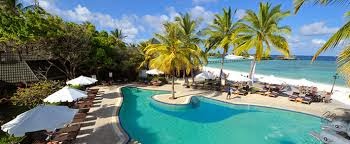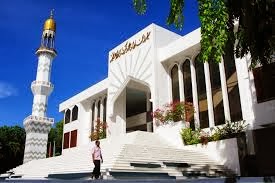Maldives Tourist Places
Thilafushi :
Thilafushi is an artificial island created as a municipal landfill situated to the west of Malé, and is located between Kaafu Atoll's Giraavaru and Gulhifalhu of the Maldives. It is geographically part of the Vaadhoo channel.
Hulhulemale is a reclaimed island located in the south of North Male Atoll, Maldives. The artificial island was reclaimed to establish a new land mass required to meet the existing and future housing, industrial and commercial development demands of the Malé region.
A basis of development known as Phase I was formed under the first Master Plan which was completed in July 2001 by a consortium of consultants from Singapore with the contribution of many government agencies, committees and individuals. It conceptually defines the long-term land use and development strategy (including urban design proposals, transportation plans and utility infrastructure) with considerations for future infrastructure connections to the adjacent Phase II and planned airport extension areas. This Master plan is to be periodically reviewed and adjusted to include advances in development.
Paradise Island Resort:
This five star resort called Paradise Island has the local name Lankanfinolhu. Paradise Island, opened in 1994 is located in North Male' Atoll, which is 9.6km from the Airport. Paradise Island is 1km long and 230 meters wide and has beach all around with an excellent marine life around.
If you want a tropical island holiday in this land with white sands, clear lagoon, five star setting with excellent service, Paradise will cater to all your needs. There is good news for surfing enthusiasts. The best surfing areas easily reachable and special trips can be arranged for resident guests who would like to go surfing.
Villingili (Seenu Atoll):
 In 1997 the government of the Maldives contracted the American firm Abonmarche to build a large resort and marina there, to attract tourism. Later, the government redacted this contract in 2000 and, finding no other bidders, awarded it to another firm called "Energy Tours" to build a smaller resort. Energy Tours defaulted on this contract.
In 1997 the government of the Maldives contracted the American firm Abonmarche to build a large resort and marina there, to attract tourism. Later, the government redacted this contract in 2000 and, finding no other bidders, awarded it to another firm called "Energy Tours" to build a smaller resort. Energy Tours defaulted on this contract.In 2005 Maldives President Maumoon Abdul Gayoom contracted Shangri-La Hotels & Resorts, a Hong Kong-based company, to build the first luxury resort in Addu Atoll. The resort is being developed by Addu Investment Private Limited (70%) and the Maldivian Government (30%). The resort will cost an estimated USD 150 million and is expected to open in early 2009. Shangri-La's Villingili Resort & Spa will feature a range of 142 villas including two Presidential Villas.

National Museum (Maldives):
Established on the National Day of the Maldives, the first National Museum of the country was opened on November 11, 1952, by the Prime Minister at the time, Mohamed Amin Didi.
With the purpose of preserving history and calling upon a sense of patriotism among the people, the building values a large collection of historical artifacts, ranging from stone objects to fragments of royal antiquities from the Buddhist era to the rule of Islamic monarchs.
The Museum was earlier looked after by the Maldivian Centre for Linguistic and Historical Research however, on 28 April 2010, this institution was abolished by President Mohamed Nasheed and its charge of the Museum's responsibilities given to the Ministry of Tourism, Arts and Culture while the linguistic and historical research responsibilities were handed over to the Maldives College of Higher Education.

Hithaadhoo is a district of Addu City, in the Maldives. Hithadhoo is the main administrative district of Addu City, with many of the administrative buildings in this district. The town is situated on the island of the same name, the westernmost of Addu Atoll (previously known as Seenu Atoll). In terms of population count, Hithadhoo is home to the largest population in Addu City.
Hithadhoo is the second largest island in the Maldives with a surface area of 525.7 Ha (5.3 sqm). It has a length of 8.6 km and a width of 1.8 km at its widest point. It is also the second largest inhabited island in Maldives.
The part of the island south of the town is lushly vegetated with palms and shrubs, whilst the northern end of the island consists of a partially stony, unreal scrubland, which can be explored only on narrow trails. Hithadhoo Town is marked by dusty roads, narrow lanes, leaning houses and dense vegetation. Island traffic is generally quite colourful, particularly when hundreds of island school children dressed in a multitude of differently coloured school uniforms are queueing up for the bus.
Gan:
Gan is the southernmost island of Addu Atoll (previously also known as Seenu Atoll), as well as the southernmost island of the Maldives. It is relatively large by Maldive standards.
Gan Island is the second largest island of the atoll, after Hithadhoo, and measures 2.2561 square kilometres (0.87 sq mi) in area. Gan Island was formerly inhabited, but its inhabitants were moved to neighboring islands after the British naval and airbase was built. It has had continuous human habitation since very ancient times. There were large cultivated fields of yams, manioc and coconut trees on this island. The origin of the word "Gan" is in the Sanskrit word "Grama", meaning "village".
Gan Island has now a hotel catering for tourists and is connected by causeways to the neighboring islands of Feydu, Maradu and Hithadhoo.
This island should not be confused with other Maldive islands called "Gan" in Huvadhu Atoll and Haddummati Atoll.
Malé Friday Mosque:
Malé Hukuru Miskiy or Malé Friday Mosque is an ancient decorated mosque located in the city of Malé, Kaafu Atoll, Maldives. The mosque was originally constructed in 1658 under the reign of Sultan Ibrahim Iskandar I over two years time, and was constructed mostly out of coral stone. The building is surrounded by a 17th-century cemetery, whose coral stone headstones are intricately and uniquely carved. The site also includes a coral stone minaret.
Hukuru Miskiy (Friday Mosque) has a perimeter of 199 ft. The main building which is still used for conducting the daily prayers is divided into three sections:
 Mihuraabuge:
Mihuraabuge: The room or section used by the Imam in leading the prayers.
Medhu Miskiy: The middle Mosque.
Fahu Miskiy: The back Mosque.
The interior of the mosque has many valuable samples of traditional Maldivian art in the form of woodcarving and lacquerwork in panels and ceilings.
maradhoo addu:
Maradhoo is located in the middle of the island chain on the Western side of Addu City. To the North are Hankede followed by Hithadhoo's Gaukendi, Rujjehera, Abuhera, RAF, Maamendhoo and Mainland Hithadhoo. To the South are Maradhoo-Feydhoo, Feydhoo and Gan island. Maradhoo is about 539 kilometers from the Maldives capital island, Male. It has a population of 3289 and is ranked 17th in terms of population in Maldives. Mardhoo's location makes it strategically important for the atoll as the main bridging point between the main industrial island Gan and the atoll's administrative capital Hithadhoo. Maradhoo is a larger island in Maldivian terms. The southern part, towards Feydhoo, has a separate administrative division and is regarded as a separate island named Maradhoo-Feydhoo, even though it is physically attached to Maradhoo island itself.
Maradhoo's landscape mainly features palm trees and tropical shrubs as in other islands in Addu Atoll. The island consists of small roads, close lanes, large number of closely built houses, only a few have a second floor. Green vegetation surrounds most of the housing compounds, especially coconut palm and banana trees, and are regarded as part domestic agriculture.
Maradhoo has three wards
The north towards Hankede is called Venbolhofushi(which is geographically a separate island)
The central area is called Egganburi
The South is called Valiburi, and further south is feydhooburi, now known as Maradhoo-Feydhoo.
 NOTE:Though wards are known to common like this, since old times the official names were RANDHOO(valiburi) and MAARANDHOO(egganburi)
NOTE:Though wards are known to common like this, since old times the official names were RANDHOO(valiburi) and MAARANDHOO(egganburi)The northeast end of the island is a place of historical importance, where the British navy had a major slipway and marine maintenance base. This area is now being used by a private company as a slipway and serves as a major maintenance and docking center for Dhonis, Ships and other sea-going vessels throughout the atoll as well as nearby atolls. In fact it is the only such facility in the atoll. Another significant structure is Bondoge ( literally meaning 'Big house'), which was used as a criminal detention center by British RAF forces during and after the second world war. After the RAF left Addu Atoll, Bondoge was used as a theater by locals and is now an administrative building containing a Kids Club called Club Goadhiyya. This building stands as the largest building in the island.
Maradhoo is the main fishing village in the atoll and supplies fish to nearby Maradhoo-Feydhoo and Feydhoo. Maradhoo also has good house reef with plenty of varieties of fish and multi-colored corals and is a famous diving point for divers who come to Addu Atoll. Maradhoo Inside is a place in the interior atoll, before the island Maradhoo.






















